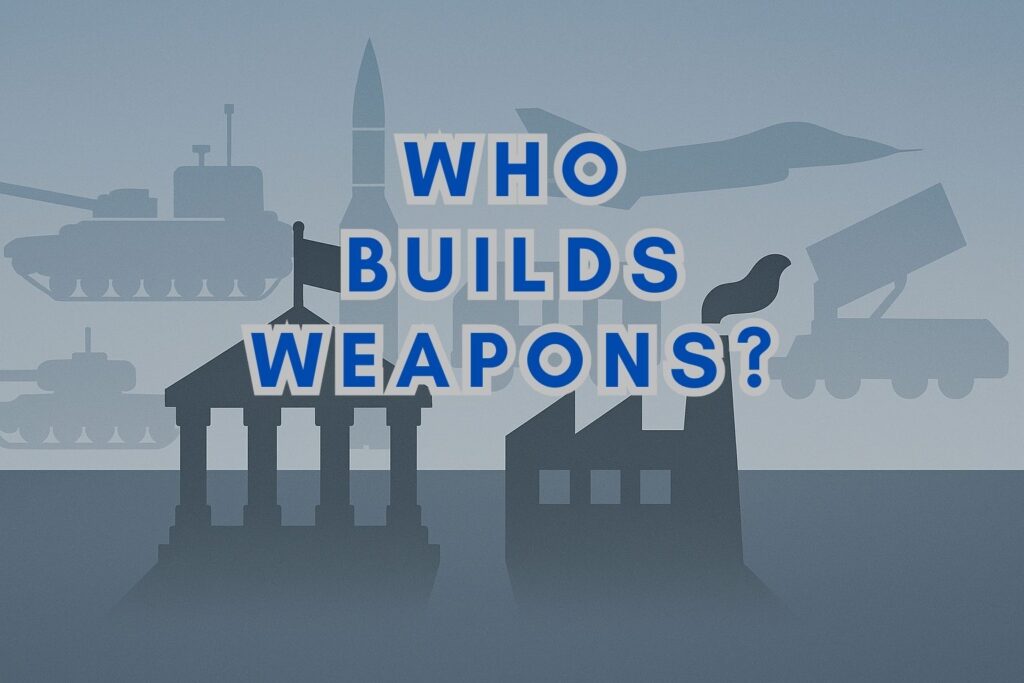
It Starts with a Need
Every weapon is produced to fulfill a strategic need. For example, an army in need of a longer-range missile or a more advanced submarine creates the demand to stimulate the production of these products.
This need starts the process of creating new equipment, but who actually builds it?
Governments: The Ultimate Customer
In most countries, military development is primarily led by governments. They set strategic goals, manage budgets, and handle the purchase of defense equipment—tasks typically overseen by defense ministries. Sometimes, governments even take production into their own hands, especially for high-risk or highly specialized projects that private companies might avoid due to lack of profit.
Private Companies: The Builders and Innovators
Generally, governments determine and fund defense needs. But it is often private defense companies that actually design and produce these systems. These range from global giants such as Lockheed Martin, BAE Systems, Raytheon, and Thales.
These companies are tasked with translating military requirements into concrete solutions. They manage the entire process, from research and development to engineering, production and testing. Many of these companies also provide after-sales services, including product maintenance, modernization and user training.
Public-Private Partnerships: A Strategic Alliance
Modern defense production is a collaboration. Governments and companies often work closely together through contracts, joint research programs, and public-private partnerships. In some countries, certain defense firms are partially or fully state-owned—like Rostec in Russia, Turkish Aerospace in Türkiye, or Navantia in Spain.
In democratic governments, large-scale agreements usually require parliamentary or congressional approval. Where there is less separation of powers and a strong central government, these agreements are more direct. In both cases, however, there are oversight institutions to ensure transparency and efficiency.
| Country | Notable Defense Companies | Public or Private | Key Projects / Platforms |
|---|---|---|---|
| United States | Lockheed Martin, RTX, Northrop Grumman | Private | F-35 Lightning II, Patriot Missile, B-21 Raider |
| Türkiye | ASELSAN, TUSAŞ, Baykar | Mixed | Bayraktar TB2, KAAN Fighter, HISAR Air Defense |
| France | Dassault, Thales, Naval Group | Mixed | Rafale Jet, FREMM Frigates, SPECTRA EW Suite |
| United Kingdom | BAE Systems, Rolls-Royce | Private | Tempest Fighter Program, Type 26 Frigates |
| Russia | Rostec, UAC, Almaz-Antey | State-owned | Su-57 Jet, S-400 Air Defense, T-14 Armata Tank |
| China | NORINCO, AVIC, CETC | State-owned | J-20 Fighter, Type 055 Destroyer, HQ-9 Missile |
| Israel | Rafael, IAI, Elbit Systems | Private | Iron Dome, Arrow Missiles, Hermes UAVs |
| India | HAL, DRDO, Bharat Electronics | Mixed | Tejas Jet, Akash Missile, Arjun Tank |
| Germany | Rheinmetall, Hensoldt | Private | Leopard 2A7, Skynex Air Defense, Boxer IFV |
Conclusion: It’s a Team Effort
As we have seen, the answer to the question “Who builds weapons?” is simple. Both governments and companies. Governments set the agenda and needs, and finance the development of products. Companies bring technical expertise, production capabilities and innovative thinking. They shape the future of military power and global security, together.
In our third lesson, we will investigate the main military branches and their roles.






